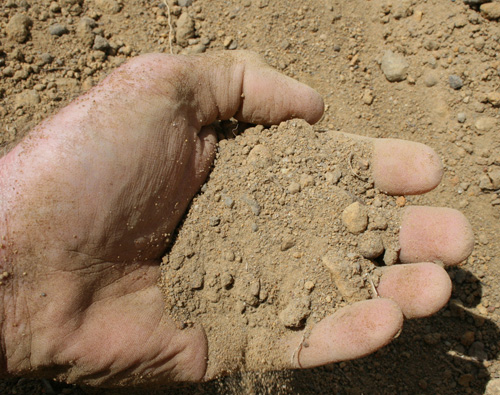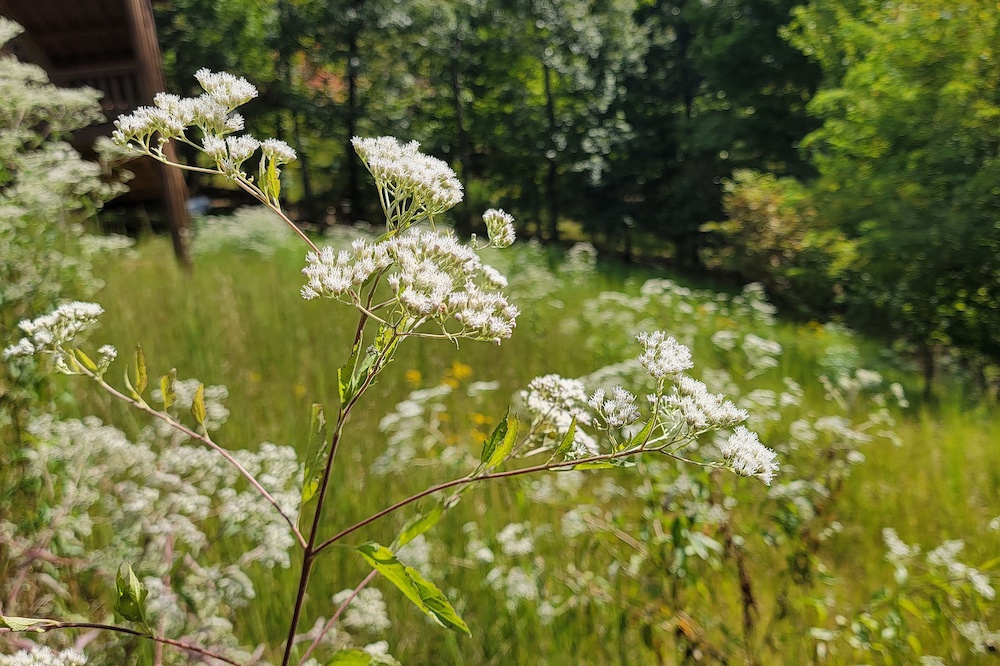It is estimated that 25 billion tons of soil are lost every year due to erosion. With it taking 500 years to replace just one inch of top soil, any thing that helps to prevent erosion will benefit future generations.
There are several ways to prevent erosion in the home landscape, but the most important thing you can do is cover the soil with vegetation or mulch.
Grass works great
A grass lawn is one of the quickest and easiest ways to add vegetation to a large area. Sod or quick growing grass seed is often planted as a temporary measure until other landscape plants, trees and shrubs are established. However, some areas are either too shady or too steep for grass to grow well. In spots that receive less than four hours of sunlight per day, trying to grow grass is a waste of time. Grass can grow on steep slopes, but maintaining it with a lawnmower may become difficult or impractical.
Ground covers hold soil in place
In these challenging situations, consider establishing alternative ground cover plants, trees or shrubs that are best adapted to the site. The roots of these plants will help hold the soil in place and minimize erosion.
There are many ground covers that can be planted to cover larger areas fairly quickly while not breaking your landscape budget. Some favorites include junipers, Japanese spurge, Asiatic jasmine, autumn fern, bugleweed, cast-iron plant, Carolina jessamine, creeping raspberry, daylilies, Japanese plum yew, evergreen candytuft, liriope, mondo grass, rosemary, St. John’s wort and phlox. Do your homework and determine which plants are best suited for sunny versus shady areas. For more information about growing these and other groundcovers in Georgia, see the University of Georgia Cooperative Extension publication about ground covers online at http://t.uga.edu/9s .
The best time to install ground cover plants, and all new plants for that matter, is in the fall or winter months.
Remember to mulch around these plants to fill in the gaps and cover any exposed soil. Any mulch type is better than no mulch at all. Mulch selection on steep slopes may be limited to either pine straw or finely shredded wood mulches, which tend to stay in place better than other types. Wood chips and pine bark nuggets tend to float away with heavy rains.
Build a terrace
In areas that are difficult to access, it may be necessary to install an earthen ridge or terrace, which will catch runoff water, let it soak into the ground and deliver it safely to the bottom of a hillside with minimal erosion. Terraces should be installed on a hillside on the contour at regular intervals to create shorter slopes that will slow down the force of the water.
Fairly level areas between the slopes could include lawn grass surrounded by a boarder of landscape plants. A more expensive and permanent approach would be to add retaining walls built of stones, blocks or landscape timbers.
The average homeowner should not tackle retaining walls higher than a foot or two. Hire a professional landscape contractor with the proper equipment and expertise for these larger jobs.








